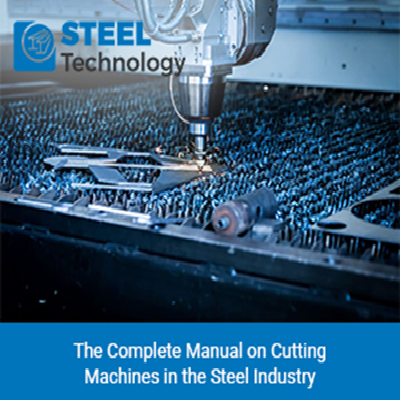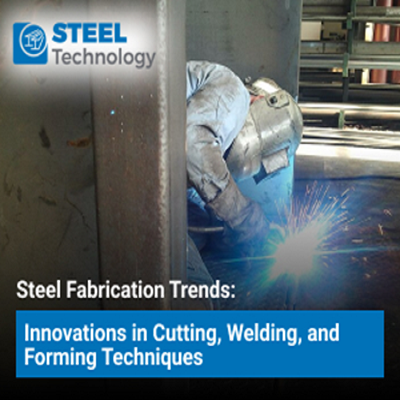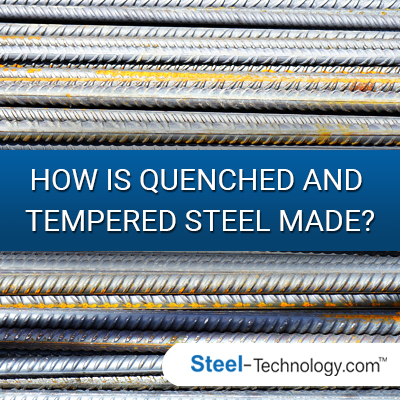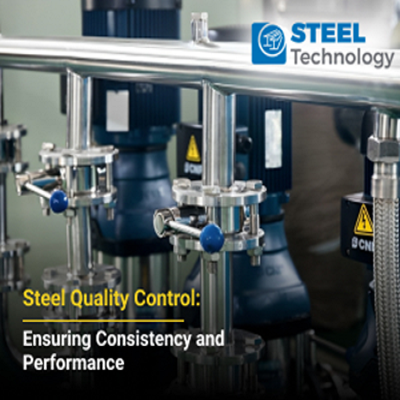The Complete Manual on Cutting Machines in the Steel Industry

Introduction to Cutting Machines in the Steel Industry
In the dynamic landscape of the steel industry, where precision and efficiency are paramount, cutting machines have emerged as essential tools that drive innovation, productivity, and quality. These machines have revolutionized the way steel materials are processed, transforming raw steel into intricately shaped components that serve diverse industrial applications. This chapter provides a comprehensive introduction to the pivotal role of cutting machines within the steel industry, highlighting their significance, types, and the myriad benefits they bring to the table.
1.1 The Significance of Cutting Machines
In today's landscape, the steel industry forms a vital foundation for modern infrastructure, serving diverse sectors like construction, automotive, and aerospace. Fulfilling the stringent requirements of these domains demands a series of processes, with cutting standing as a pivotal phase. Within this framework, cutting machines have become the linchpin, facilitating the essential transformation of steel materials into desired shapes with precision, uniformity, and speed.
1.2 Evolution and Advancements
The journey of cutting machines within the steel industry has been one of continuous evolution. From traditional manual methods to the cutting-edge technologies of today, the sector has witnessed significant advancements in terms of both machinery and techniques. These innovations have allowed manufacturers to overcome challenges such as material thickness variations, complex geometries, and the demand for high-speed production.
1.3 Importance of Precision
Precision is the bedrock of the steel industry. The ability to achieve accurate cuts, intricate designs, and tight tolerances directly impacts the quality of end products. Cutting machines excel in maintaining this precision consistently, eliminating human errors, and ensuring uniformity across batches. This level of accuracy translates into enhanced product quality and customer satisfaction.
1.4 Types of Cutting Machines
In the steel industry, the variety of cutting machines available reflects the diverse needs of modern manufacturing. Each type of cutting machine is designed to excel in specific applications, materials, and precision requirements. This section explores the key types of cutting machines used in the steel industry, outlining their operational principles and advantages.
A) Plasma Cutting Machines:
Operational Principle: Plasma cutting machines employ a high-velocity jet of ionized gas (plasma) to melt and sever through steel materials. The process begins with a gas, often compressed air or nitrogen, being passed through an electric arc, ionizing it into plasma. The plasma's extreme heat and kinetic energy melt the metal, while a high-velocity gas flow removes the molten material.
Advantages:
- Swift Operation: Plasma cutting is celebrated for its swift cutting speeds, rendering it apt for high-volume manufacturing.
- Adaptability: It adeptly manages a broad spectrum of material thicknesses and types, encompassing thin sheets and thick plates alike.
- Economical: Plasma cutting often proves to be a cost-effective choice, particularly for medium to thick materials, compared to alternative methods.
B) Laser Cutting Machines
Operational Principle: Laser-cutting machines utilize a highly focused laser beam to melt, burn, or vaporize the material along a predetermined path. The laser's intense energy density heats the material to its melting or vaporization point, and a gas jet assists in blowing away the molten material.
Advantages:
- Precision: Laser cutting offers exceptional accuracy and is well-suited for intricate and detailed designs.
- Clean Cuts: The narrow laser beam results in minimal material wastage and precise cuts.
- Minimal Heat-Affected Zone: Laser cutting produces a small heat-affected zone, reducing distortion and material damage.
- No Tool Wear: Since it's a non-contact process, there is no tool wear, leading to consistent quality.
C) Waterjet Cutting Machines
Operational Mechanism: Waterjet cutting engages a high-pressure stream of water infused with abrasive particles to erode the material. As the water propels the abrasive particles, they effectively wear away the material, facilitated by a precision nozzle.
Advantages:
- Cold Cutting: Waterjet cutting is a cold process, meaning it doesn't produce heat, preserving material integrity.
- No HAZ: There is no heat-affected zone, making it suitable for heat-sensitive materials.
- Versatility: Waterjet cutting can handle a wide range of materials, including metals, ceramics, glass, and composites.
- Intricate Shapes: It's capable of cutting complex shapes with high precision.
D) Flame Cutting Machines
Operational Principle: Flame cutting, also known as oxy-fuel cutting, involves using an oxygen-fuel flame to heat the material to its ignition point. A high-velocity stream of oxygen is then used to blow away the oxidized material, effectively cutting through the metal.
Advantages:
- Thick Materials: Flame cutting is particularly suited for cutting thick steel sections.
- Cost-Effective: It's a cost-effective method for cutting large, thick materials.
- Simple Operation: Flame-cutting equipment is relatively simple and can be operated with minimal training.
These cutting machines represent a spectrum of technologies available to the steel industry. Each type offers unique benefits, making them suitable for various applications based on material properties, thickness, precision requirements, and production volumes. As the industry continues to evolve, these machines play an integral role in shaping the future of steel processing.
1.5 Significance in Modern Steel Processing
In today's fast-paced manufacturing environment, cutting machines are indispensable for maintaining competitiveness. Their ability to streamline processes, increase efficiency, and reduce material wastage aligns perfectly with the industry's quest for operational excellence. As demands for customization, complexity, and volume continue to rise, cutting machines remain crucial enablers of success.
1.6 Preview of Subsequent Chapters
This manual delves deeper into the intricacies of cutting machines in the steel industry. Subsequent chapters explore the various types of cutting machines, their operating principles, maintenance requirements, and safety considerations, showcasing successful implementations. Additionally, the manual will cast a glimpse into the future trends that are set to shape the landscape of cutting technology within the steel industry.
Fundamentally, cutting machines act as pioneers of innovation and progress within the steel industry. Their transformative abilities pave the route for increased productivity, elevated product quality, and an industry well-equipped to tackle upcoming challenges headfirst.
2. Factors Guiding Cutting Machine Selection
Choosing the right cutting machine within the steel industry holds paramount significance, directly influencing production efficiency, product excellence, and cost-effectiveness. Various pivotal factors contribute to this selection process, ensuring alignment with the distinct requirements of steel processing. A comprehensive grasp of these factors is imperative for making informed decisions that optimize results.
2.1 Material Thickness and Type
The thickness and type of material being cut are fundamental considerations when selecting a cutting machine. Different machines excel at cutting varying thicknesses and materials.
2.2 Precision Requirements
The level of precision needed for the final product influences the choice of cutting machine. Laser cutting, with its fine beam and minimal heat-affected zone, excels in applications demanding intricate designs and tight tolerances. On the other hand, plasma cutting might be more suitable for applications where slightly lower precision is acceptable.
2.3 Production Volume
The expected production volume has a significant impact on the choice of cutting machine. For high-volume production, machines that offer rapid cutting speeds, such as plasma cutters, may be preferred. For lower production volumes with an emphasis on precision, laser cutting could be the better choice.
2.4 Financial Factors
Financial aspects significantly influence the selection procedure. Distinct cutting machines carry differing initial expenses, operational charges (including consumables and energy usage), and maintenance prerequisites. While laser cutting machines may entail higher upfront costs, their accuracy, and efficiency often yield long-term savings by curbing material wastage and boosting overall throughput.
2.5 Material Properties
The properties of the material being cut, such as its hardness, composition, and susceptibility to heat, influence the choice of cutting method. Waterjet cutting is suitable for materials sensitive to heat, while flame cutting is effective for thicker, less heat-sensitive materials.
2.6 Cutting Speed and Throughput
The desired cutting speed and overall throughput of the production process impact the selection of a cutting machine. Plasma-cutting machines are known for their high cutting speeds, making them suitable for applications requiring fast turnaround times.
2.7 Automation and Integration
The level of automation and integration with existing production processes also affects the choice of cutting machine. Some machines can be seamlessly integrated into automated production lines, improving overall efficiency and reducing labor costs.
2.8 Flexibility and Versatility
Consider whether the cutting machine can handle a variety of shapes, profiles, and materials. Machines that offer versatility can adapt to changing production needs and enable a wider range of applications.
2.9 Environmental Considerations
Environmental concerns, such as emissions, waste generation, and energy consumption, are increasingly important. Waterjet cutting, for example, produces minimal waste and is considered environmentally friendly.
In conclusion, selecting the right cutting machine for the steel industry requires a comprehensive understanding of the specific needs, materials, and production goals. By carefully evaluating these factors, manufacturers can make informed decisions that optimize efficiency, precision, and overall performance in steel processing operations.
3. Maintenance and Safety Guidelines
Maintaining cutting machines and ensuring a safe working environment are essential aspects of their successful operation in the steel industry. Regular maintenance and adherence to safety protocols not only prolong the lifespan of the equipment but also safeguard the well-being of operators. This section outlines the key maintenance and safety guidelines to consider when working with cutting machines in the steel industry.
3.1 Routine Maintenance Checks
Maintaining cutting machines through regular upkeep is vital for their optimal performance. Below are maintenance guidelines to follow:
- Scheduled Inspections: Set up a maintenance schedule to conduct thorough checks and servicing of the cutting machine. This involves examining for any signs of wear or damage in parts, monitoring fluid levels, and assessing overall functionality.
- Lubrication: Ensuring proper lubrication of moving components is essential to prevent friction and minimize wear. Adhere to the manufacturer's recommendations for suitable lubricants and intervals for application.
- Cleaning: Consistently clean the machine to eliminate debris, dust, and residues that could accumulate and hinder its performance.
- Calibration: At regular intervals, calibrate the machine to guarantee its accuracy in cutting measurements and precision.
- Replacement of Consumables: As per the manufacturer's advice, replace consumable parts like cutting tips, nozzles, and laser optics to maintain optimal performance.
3.2 Safety Measures
Ensuring safety remains a top priority when engaging with cutting machines, given the potential risks involving high temperatures, sparks, and moving mechanisms. Adhere to these safety procedures:
- Personal Protective Equipment (PPE): All operators must don the appropriate personal protective gear, including safety goggles, gloves, flame-resistant clothing, and hearing protection.
- Ventilation: Maintain proper air circulation in the cutting area to disperse fumes, gases, and debris produced during the cutting process.
- Air Circulation: Guarantee adequate ventilation within the cutting vicinity to effectively disperse fumes, gases, and particles that emerge during the cutting operation.
- Fire Prevention: Keep fire extinguishers readily accessible and implement fire prevention measures, such as clearing flammable materials from the cutting area.
- Operator Training: Provide thorough training to operators on the safe operation of the cutting machine, including emergency shutdown procedures.
- Machine Guarding: Install safety guards and barriers to prevent accidental contact with moving parts and the cutting process.
- Emergency Stop: Equip the machine with easily accessible emergency stop buttons for immediate shutdown in case of emergencies.
- Lockout/Tagout: Implement lockout/tagout procedures to prevent accidental machine startup during maintenance or repairs.
- Material Handling: Use proper material handling equipment to load and unload materials safely onto the cutting machine.
- First Aid and Medical Kits: Keep first aid kits and medical supplies on hand in case of injuries.
3.3 Operator Training
Comprehensive operator training is paramount to grasp the machine's functionality, maintenance prerequisites, and safety protocols. Training should encompass:
• Machine Operation: Adequate initiation, cessation, and management of the cutting machine.
• Maintenance Procedures: Foundational maintenance routines and their optimal timings.
• Safety Protocols: Significance of personal protective equipment (PPE), adherence to safety guidelines, and actions during emergencies.
• Emergency Measures: Response steps during accidents, fires, or machine glitches.
3.4 Documentation and Record Keeping
Maintain detailed records of machine maintenance, inspections, and operator training. These records provide a history of the machine's maintenance and safety compliance, aiding in troubleshooting and ensuring regulatory compliance.
In summary, meticulous maintenance and adherence to safety guidelines are essential for the safe and efficient operation of cutting machines in the steel industry. By prioritizing regular maintenance checks, comprehensive operator training, and the implementation of safety protocols, manufacturers can mitigate risks, maximize machine performance, and create a secure working environment for all personnel involved.
4. Applications of Cutting Machines in the Steel Industry
Cutting machines play a pivotal role in the steel industry, enabling precise and efficient processing of steel materials for a wide range of applications. From sheet metal fabrication to structural steel cutting, these machines are indispensable tools that contribute to the creation of various steel products. This section explores some of the key applications of cutting machines in the steel industry.
4.1 Sheet Metal Fabrication
Cutting machines are extensively used in sheet metal fabrication, where flat metal sheets are transformed into intricate components for various industries. Whether it's creating precise holes, intricate patterns, or complex shapes, cutting machines ensure accuracy and repeatability, making them indispensable for industries such as automotive, electronics, and appliance manufacturing.
4.2 Structural Steel Cutting
In the construction sector, cutting machines are used to process structural steel elements, such as beams, columns, and girders. These machines ensure that the steel components are accurately cut and prepared for assembly, resulting in precise and stable structures in building projects.
4.3 Pipe and Tube Cutting
The steel industry relies on cutting machines to accurately cut pipes and tubes, which are essential components in industries like oil and gas, plumbing, and infrastructure. Cutting machines ensure precise cuts for welding, fitting, and joining these materials into complex systems.
4.4 Profile Cutting
Profile cutting involves shaping steel materials into specific profiles or designs, often required for specialized applications. Cutting machines allow for the creation of intricate profiles, curves, and notches with high precision, making them valuable tools in industries such as metalworking, art, and architectural design.
4.5 Custom Fabrication
Custom fabrication demands precision and versatility, often involving unique designs and specifications. Cutting machines enable fabricators to transform raw steel materials into tailored components, catering to individual client requirements across industries.
4.6 Automotive and Aerospace Industries
In industries such as automotive and aerospace, where precision and quality are paramount, cutting machines are used to shape steel components that meet rigorous standards. From chassis components to aerospace structural elements, cutting machines ensure that parts are produced with the required precision and consistency.
4.7 Shipbuilding
Shipbuilding requires a diverse range of steel components, from hull sections to internal structures. Cutting machines play a crucial role in producing accurately shaped and sized parts, contributing to the construction of reliable and seaworthy vessels.
4.8 Metal Art and Sculpture
Beyond industrial applications, cutting machines find a place in the world of art and sculpture. Artists use these machines to cut and shape steel materials into intricate designs, enabling the creation of stunning and unique metal artworks.
4.9 Role in Industrial Machinery
Cutting machines play a vital role in fabricating industrial machinery and equipment. They contribute to crafting components that demand essential precision, strength, and resilience, catering to the diverse needs of machinery across various sectors.
5. Future Trends in Cutting Technology for Steel Industry
As technology continues to advance, cutting machines in the steel industry is poised for transformative changes that will shape the future of steel processing. From the integration of automation and artificial intelligence to improved energy efficiency, these trends are set to revolutionize how steel materials are cut and shaped. This section explores the key future trends in cutting technology for the steel industry.
5.1 Automation and AI Integration
The fusion of automation and artificial intelligence (AI) is set to revolutionize cutting processes in the steel industry. Cutting machines will harmonize with advanced robotics and AI-driven systems, enabling automated material handling, cutting, unloading, and sorting. AI algorithms will refine cutting paths, adapt to changing material properties, and predict maintenance needs, leading to heightened efficiency and reduced human intervention.
5.2 Improved Energy Efficiency
Energy efficiency is a growing concern in manufacturing. Future cutting machines will be designed to minimize energy consumption through advanced power management systems and optimized cutting processes. Technologies such as regenerative braking and intelligent power distribution will contribute to more sustainable and environmentally friendly steel processing.
5.3 Advancements in Material Handling
Efficient material handling is vital in steel processing. Future cutting machines will integrate advanced material handling systems that enhance the flow of materials through the production process. This includes automated loading and unloading mechanisms, as well as intelligent material tracking and management systems.
5.4 Nanosecond Laser Cutting
Advancements in laser technology are leading to the development of nanosecond laser cutting. This technology offers extremely high precision and minimal heat-affected zones, making it ideal for intricate designs and thin materials. Nanosecond laser cutting could enable the fabrication of micro-scale components with unprecedented accuracy.
5.5 Hybrid Cutting Systems
Hybrid cutting systems combine different cutting technologies to leverage their strengths while mitigating weaknesses. For instance, combining laser cutting and plasma cutting can provide the precision of laser cutting with the speed of plasma cutting. These hybrid systems offer versatility and adaptability to various materials and applications.
5.6 IoT-Enabled Maintenance
The Internet of Things (IoT) will play a role in predictive maintenance for cutting machines. Sensors embedded in the machines will collect data on factors like temperature, vibration, and power usage. AI algorithms will analyze this data to predict potential breakdowns, allowing for proactive maintenance and minimizing unplanned downtime.
5.7 3D Printing and Additive Manufacturing
While not traditional cutting methods, 3D printing, and additive manufacturing are closely related to the steel industry. In the future, these techniques might be integrated with cutting processes to create complex, multi-material components that combine subtractive and additive manufacturing in a single production flow.
5.8 Sustainable Practices
Sustainability is becoming a central consideration in manufacturing. Future cutting technologies will focus on reducing material wastage, energy consumption, and emissions. This includes the development of eco-friendly cutting methods and the recycling of waste materials generated during the cutting process.
Conclusion
Cutting machines are the backbone of precision and efficiency in the steel industry. Explored in this guide are the machine types, selection factors, maintenance, and safety protocols. These machines have revolutionized sheet metal fabrication, structural steel cutting, and more, ensuring accuracy across industries. The integration of automation, AI, and sustainable practices forecasts an innovative future. Cutting machines, a testament to human ingenuity, continue to drive steel processing toward a future of unparalleled precision and productivity.











